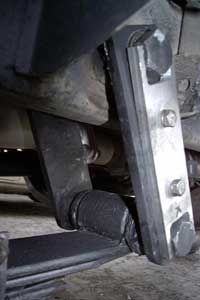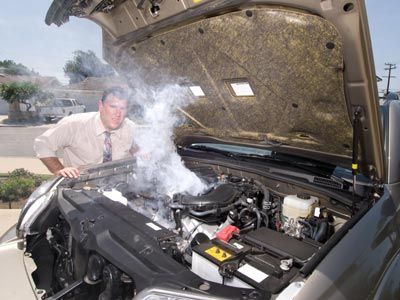In the classic 1953 French thriller "The Wages of Fear," a group of desperate men tackles one of the more dangerous jobs imaginable: transporting highly unstable nitroglycerine across brutal jungle roads to extinguish a burning oil well. Watching the film, you can't help but join the characters in feeling every bump in the road. After all, one bad pothole isn't going to spill their coffee; it's going to blast their truck halfway to Peru.
Chances are your towing jobs aren't quite this life-and-death. But whether you're hauling livestock or linen, you're going to want a reasonably smooth ride. Proper tires and tire care both play a big role in this, but most of the duty falls to the trailer and vehicle suspension systems. Using an array of springs and shock absorbers, these systems keep every bump in the road from transferring directly to your seat. To learn more, read How Car Suspensions Work.
Advertisement
This is where suspension bolts enter the picture. These thick metal rods have spiral grooves on one or both ends, much like a screw. This feature allows them to slide through metal plates or other vehicle parts and screw firmly into nuts on the other side. In this way, they connect the suspension to the rest of the vehicle or wheel.
In this article, we'll look at the different kinds of suspension bolts and how to use them. Who knows? If you're ever stranded in a dreary South American town, this article could save your life.
Advertisement





